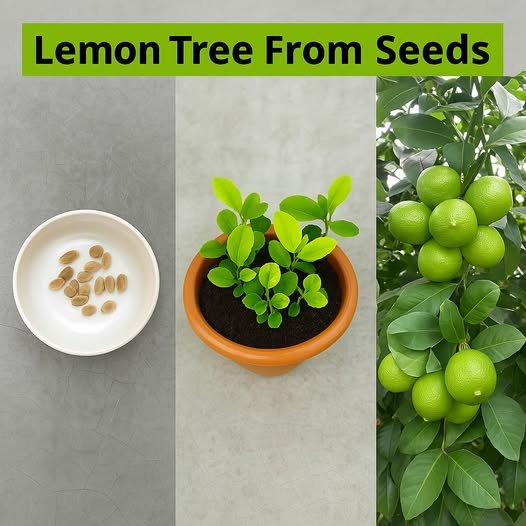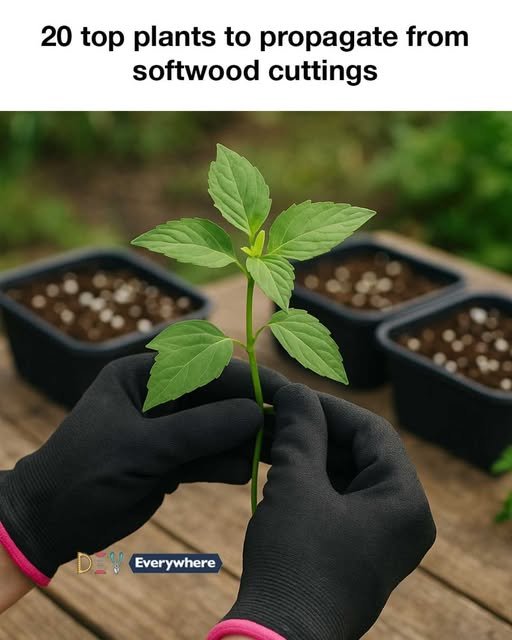I Don’t Need to Buy Lemons Anymore – How to Grow Lemons for Fruit All Year Round
Lemons are one of the most versatile and useful fruits, commonly used in cooking, baking, beverages, and even for household cleaning. Instead of purchasing lemons from the store, why not grow your own tree and enjoy fresh, organic lemons all year round? Growing lemons at home is easier than you might think, whether in a garden, on a balcony, or even indoors.
Why Grow Your Own Lemons?
- Continuous Harvest – With proper care, lemon trees can produce fruit year-round.
- Organic and Chemical-Free – Store-bought lemons may be treated with pesticides and preservatives, while homegrown lemons are naturally fresh.
- Aesthetic and Fragrant – A lemon tree is not just productive; it adds beauty to your home or garden with its lush green leaves and fragrant blossoms.
- Cost-Effective – Instead of repeatedly purchasing lemons, growing your own tree can provide a long-term supply.
How to Grow Lemons at Home
1. Choosing the Right Lemon Variety
There are different varieties of lemon trees, but if you want continuous fruit production, consider these types:
- Meyer Lemon – A hybrid variety known for its sweeter taste and ability to produce fruit multiple times a year.
- Eureka Lemon – Commonly found in stores, it grows well in containers and has a steady fruiting cycle.
- Lisbon Lemon – A vigorous grower with large fruit and a productive yield.
2. Growing Lemons from Seeds or Saplings
- If growing from seeds, extract seeds from an organic lemon, rinse them, and plant them in a small pot filled with moist soil. It may take a few years before a seed-grown lemon tree produces fruit.
- If growing from saplings, purchase a grafted young lemon tree from a nursery for a quicker harvest.
3. Choosing the Best Location
Lemon trees require plenty of sunlight, ideally 6–8 hours daily. If planting outdoors, choose a sunny spot sheltered from strong winds. For indoor growth, place the tree near a south-facing window or use a grow light to supplement natural light.
4. Selecting the Right Pot and Soil
For terrace or indoor growth, use a large pot (at least 15-20 inches deep) with good drainage. Lemon trees prefer well-draining, slightly acidic soil (pH 5.5–6.5). A mix of potting soil with perlite or sand works well.
5. Watering and Fertilizing
- Keep the soil moist but not soggy. Overwatering can lead to root rot, while underwatering may cause fruit drop.
- Use a balanced citrus fertilizer rich in nitrogen, phosphorus, and potassium. Fertilize every 4–6 weeks during the growing season.
6. Pollination and Encouraging Fruit Production
If growing lemons indoors, you may need to hand-pollinate the flowers using a soft brush to transfer pollen between blossoms. Outdoor trees rely on bees and other pollinators for fruit development.
7. Pruning and Maintenance
- Prune dead or weak branches to encourage healthy growth and air circulation.
- Regularly inspect for pests such as aphids or spider mites and treat them with neem oil or insecticidal soap.
8. Protecting Lemons in Cold Weather
Lemon trees thrive in warm climates but can suffer in temperatures below 40°F (4°C). If growing outdoors in a colder region:
- Bring potted trees indoors during winter.
- Use a plant cover or mulch around the base to protect roots from frost.
Harvesting Your Lemons
Lemons take about 6–9 months to fully ripen. Pick them when they have a deep yellow color and a slight give when squeezed. The more you harvest, the more the tree will continue producing fruit.
Common Problems and Solutions
- Yellowing Leaves? – Could be due to overwatering, nutrient deficiency, or poor drainage
- No Flowers or Fruit? – Ensure adequate sunlight, proper pruning, and hand-pollination if necessary.
- Dropping Fruit Prematurely? – Likely caused by stress, inconsistent watering, or nutrient imbalance.
Conclusion
Growing your own lemon tree is not only a rewarding hobby but also ensures a fresh supply of lemons throughout the year. Whether you have a large garden, a small balcony, or just a sunny window, you can successfully cultivate a thriving lemon tree. With proper care, you’ll never have to buy lemons again—your tree will provide you with delicious, homegrown fruit year after year!



